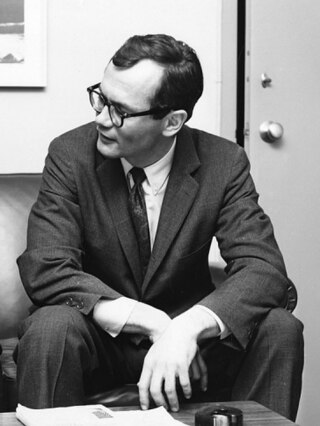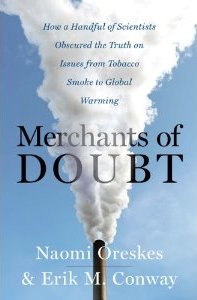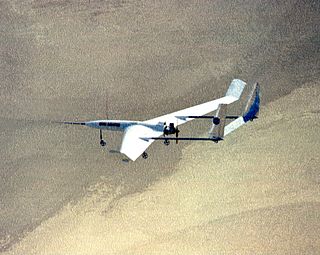
Concorde is a retired Anglo-French supersonic airliner jointly developed and manufactured by Sud Aviation and the British Aircraft Corporation (BAC). Studies started in 1954, and France and the UK signed a treaty establishing the development project on 29 November 1962, as the programme cost was estimated at £70 million . Construction of the six prototypes began in February 1965, and the first flight took off from Toulouse on 2 March 1969. The market was predicted for 350 aircraft, and the manufacturers received up to 100 option orders from many major airlines. On 9 October 1975, it received its French Certificate of Airworthiness, and from the UK CAA on 5 December.

Siegfried Fred Singer was an Austrian-born American physicist and emeritus professor of environmental science at the University of Virginia, trained as an atmospheric physicist. He was known for rejecting the scientific consensus on several issues, including climate change, the connection between UV-B exposure and melanoma rates, stratospheric ozone loss being caused by chlorofluoro compounds, often used as refrigerants, and the health risks of passive smoking.

Frederick Seitz was an American physicist, tobacco industry lobbyist, and climate change denier. Seitz was the 4th president of Rockefeller University from 1968 to 1978, and the 17th president of the National Academy of Sciences from 1962 to 1969. Seitz was the recipient of the National Medal of Science, NASA's Distinguished Public Service Award, and other honors.

The Boeing 2707 was an American supersonic passenger airliner project during the 1960s. After winning a competition for a government-funded contract to build an American supersonic airliner, Boeing began development at its facilities in Seattle, Washington. The design emerged as a large aircraft with seating for 250 to 300 passengers and cruise speeds of approximately Mach 3. It was intended to be much larger and faster than competing supersonic transport (SST) designs such as Concorde.

A supersonic transport (SST) or a supersonic airliner is a civilian supersonic aircraft designed to transport passengers at speeds greater than the speed of sound. To date, the only SSTs to see regular service have been Concorde and the Tupolev Tu-144. The last passenger flight of the Tu-144 was in June 1978 and it was last flown in 1999 by NASA. Concorde's last commercial flight was in October 2003, with a November 26, 2003 ferry flight being its last airborne operation. Following the permanent cessation of flying by Concorde, there are no remaining SSTs in commercial service. Several companies have each proposed a supersonic business jet, which may bring supersonic transport back again.

Robert Jastrow was an American astronomer and planetary physicist. He was a NASA scientist, populist author and futurist.

A drogue parachute, also called drag chute, is a parachute designed for deployment from a rapidly moving object. It can be used for various purposes, such as to decrease speed, to provide control and stability, as a pilot parachute to deploy a larger parachute or a combination of these. Vehicles that have used drogue parachutes include multistage parachutes, aircraft, and spacecraft recovery systems.

The George C. Marshall Institute (GMI) was a nonprofit conservative think tank in the United States. It was established in 1984 with a focus on science and public policy issues and had an initial focus in defense policy. Starting in the late 1980s, the institute advocated for views in line with environmental skepticism, most notably climate change denial. The think tank received extensive financial support from the fossil fuel industry.

William Aaron Nierenberg was an American physicist who worked on the Manhattan Project and was director of the Scripps Institution of Oceanography from 1965 through 1986. He was a co-founder of the George C. Marshall Institute in 1984.

Naomi Oreskes is an American historian of science. She became Professor of the History of Science and Affiliated Professor of Earth and Planetary Sciences at Harvard University in 2013, after 15 years as Professor of History and Science Studies at the University of California, San Diego.

The Handley Page HP.115 was an experimental delta wing aircraft designed and produced by the British aircraft manufacturer Handley Page. It was built to test the low-speed handling characteristics to be expected from the slender delta configuration anticipated for a future supersonic airliner.

An aeroshell is a rigid heat-shielded shell that helps decelerate and protects a spacecraft vehicle from pressure, heat, and possible debris created by drag during atmospheric entry. Its main components consist of a heat shield and a back shell. The heat shield absorbs heat caused by air compression in front of the spacecraft during its atmospheric entry. The back shell carries the load being delivered, along with important components such as a parachute, rocket engines, and monitoring electronics like an inertial measurement unit that monitors the orientation of the shell during parachute-slowed descent.

Within the sociology of knowledge, agnotology is the study of deliberate, culturally induced ignorance or doubt, typically to sell a product, influence opinion, or win favour, particularly through the publication of inaccurate or misleading scientific data (disinformation). More generally, the term includes the condition where more knowledge of a subject creates greater uncertainty.

Quiet Spike was a collaborative program between Gulfstream Aerospace and NASA's Dryden Flight Research Center to investigate the suppression of sonic booms. The patent was published with the United States Patent and Trademark Office in 2004 and is owned by Gulfstream Aerospace.

Merchants of Doubt: How a Handful of Scientists Obscured the Truth on Issues from Tobacco Smoke to Global Warming is a 2010 non-fiction book by American historians of science Naomi Oreskes and Erik M. Conway. It identifies parallels between the global warming controversy and earlier controversies over tobacco smoking, acid rain, DDT, and the hole in the ozone layer. Oreskes and Conway write that in each case "keeping the controversy alive" by spreading doubt and confusion after a scientific consensus had been reached was the basic strategy of those opposing action. In particular, they show that Fred Seitz, Fred Singer, and a few other contrarian scientists joined forces with conservative think tanks and private corporations to challenge the scientific consensus on many contemporary issues.
Douglas Aircraft Company's Model 2229 was a proposed supersonic transport (SST) originally started as a private study. The design progressed as far as making mock-ups of the cockpit area and wind-tunnel models of the overall layout. After studying the design, Douglas concluded that the SST would not work economically, and declined to enter the Model 2229 in the National Supersonic Transport (NST) program in 1963.

A Mars aircraft is a vehicle capable of sustaining powered flight in the atmosphere of Mars. So far, the Mars helicopter Ingenuity is the only aircraft ever to fly on Mars, completing 72 successful flights covering 17.242 km (10.714 mi) in 2 hours, 8 minutes and 48 seconds of flight time. Ingenuity operated on Mars for 1042 sols, until its rotor blades, possibly all four, were damaged, causing NASA to retire the craft.

Mars atmospheric entry is the entry into the atmosphere of Mars. High velocity entry into Martian air creates a CO2-N2 plasma, as opposed to O2-N2 for Earth air. Mars entry is affected by the radiative effects of hot CO2 gas and Martian dust suspended in the air. Flight regimes for entry, descent, and landing systems include aerocapture, hypersonic, supersonic, and subsonic.

Merchants of Doubt is a 2014 American documentary film directed by Robert Kenner and inspired by the 2010 book of the same name by Naomi Oreskes and Erik M. Conway. The film traces the use of public relations tactics that were originally developed by the tobacco industry to protect their business from research indicating health risks from smoking. The most prominent of these tactics is the cultivation of scientists and others who successfully cast doubt on scientific results. Using a professional magician, the film explores the analogy between these tactics and the methods used by magicians to distract their audiences from observing how illusions are performed. For the tobacco industry, the tactics successfully delayed government regulation until long after the establishment of scientific consensus about the health risks from smoking. As its second example, the film describes how manufacturers of flame retardants worked to protect their sales after toxic effects of the retardants were reported in the scientific literature. The central concern of the film is the ongoing use of these tactics to forestall governmental action to regulate greenhouse gas emissions in response to the risks of global climate change.

















